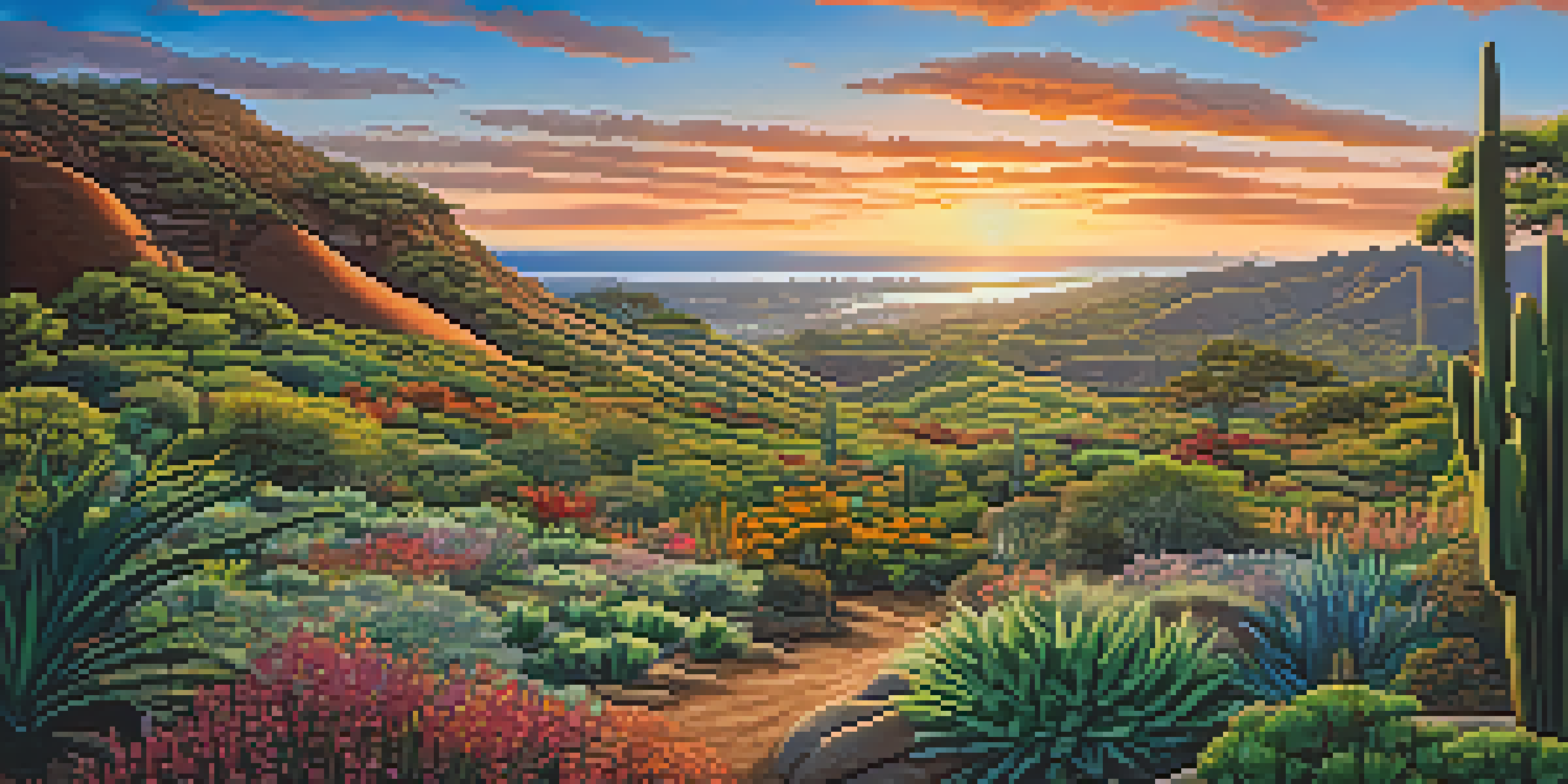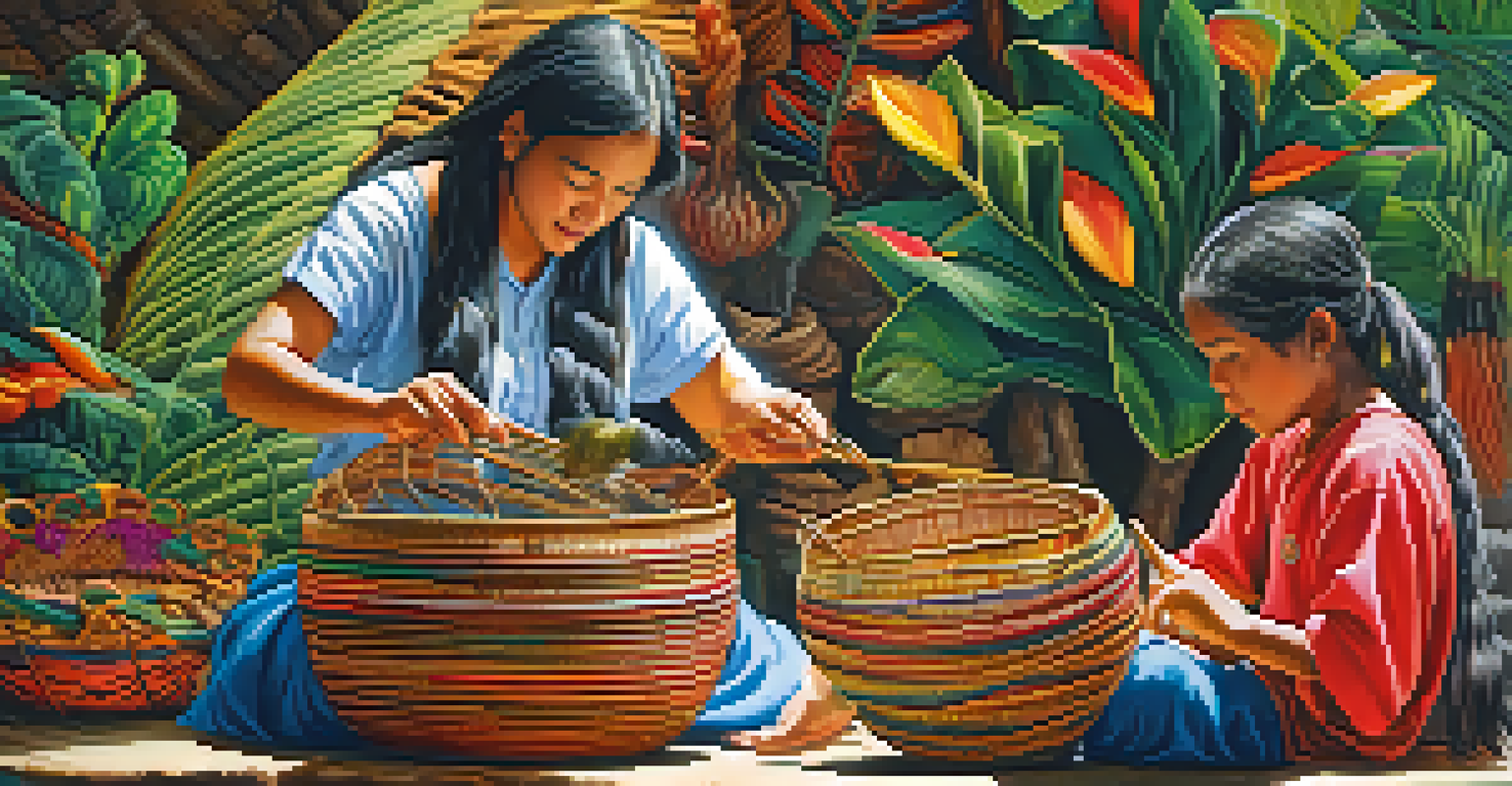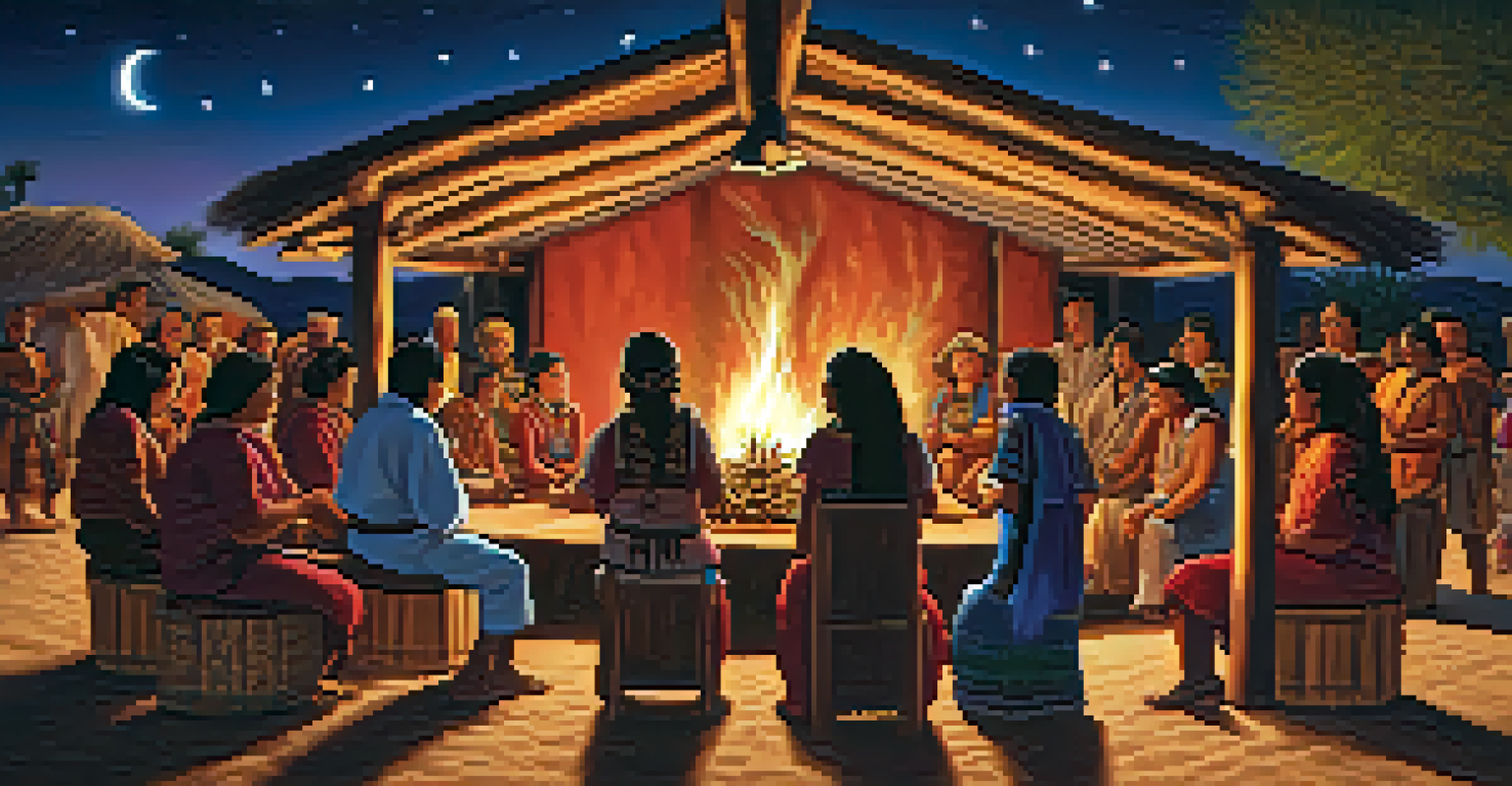The Legacy of San Diego's Native Cultures: An Educational Insight

Introduction to San Diego's Indigenous Heritage
San Diego is home to a rich tapestry of indigenous cultures, primarily the Kumeyaay, Luiseño, and Cahuilla peoples. These communities have inhabited the region for thousands of years, shaping its history and culture. Their deep connection to the land is reflected in their traditions, languages, and worldviews, making it essential to understand their legacy.
We do not inherit the earth from our ancestors, we borrow it from our children.
By exploring this heritage, we can appreciate the diverse practices and beliefs that these native cultures have maintained. From the way they used local resources sustainably to the stories passed down through generations, these elements form the backbone of their identity. Recognizing this legacy is not only vital for honoring their past but also for enriching our present.
As we embark on this journey through San Diego's native cultures, we will uncover the vibrant threads that connect their history to contemporary society. Understanding these connections helps foster respect and appreciation for the indigenous peoples who continue to influence San Diego today.
The Kumeyaay: Guardians of the Land
The Kumeyaay people are one of the earliest inhabitants of the San Diego area, known for their deep-rooted connection to the land. They traditionally relied on the region's diverse ecosystems for food, shelter, and materials for tools. This sustainable approach to living showcases their profound respect for nature, which is crucial in today’s discussions about environmental conservation.

Their oral traditions, rich with stories of creation and lessons from nature, serve not only as entertainment but as educational tools for future generations. These narratives illustrate the importance of harmony with the environment and the consequences of neglecting it. By preserving their stories, the Kumeyaay continue to educate others about their cultural values.
Rich Indigenous Heritage in San Diego
San Diego's indigenous cultures, including the Kumeyaay, Luiseño, and Cahuilla, have a profound connection to the land and a legacy that enriches the region's history.
Today, efforts are underway to revitalize Kumeyaay language and traditions, ensuring that they thrive in a modern context. Cultural events, workshops, and community gatherings play a pivotal role in this revival, inviting both community members and outsiders to participate. The Kumeyaay demonstrate that a legacy is not just a remnant of the past but a living, evolving tapestry.
Luiseño Culture: A Unique Perspective
The Luiseño people, predominantly located in the valleys and coastal areas of San Diego, have their own distinct traditions and beliefs. Their cultural practices include intricate basket weaving and vibrant ceremonies that celebrate life and nature. These artistic expressions not only serve practical purposes but also convey deep spiritual meanings.
The land is alive, it is our mother, and we are her children.
One of the most significant aspects of Luiseño culture is their connection to the land, which they regard as sacred. Through seasonal rituals, they honor the earth, its cycles, and the animals that inhabit it. This connection fosters a sense of responsibility for environmental stewardship that is incredibly relevant today.
In recent years, the Luiseño have worked to reclaim and share their culture, often collaborating with educational institutions to promote awareness. These initiatives help bridge the gap between indigenous and non-indigenous communities, fostering understanding and respect. By sharing their stories and practices, the Luiseño ensure that their culture remains vibrant and recognized.
Cahuilla Contributions to Southern California
The Cahuilla people, who primarily reside in the inland areas of Southern California, have made significant contributions to the region's cultural landscape. Their agricultural practices, including the cultivation of native plants like the agave, showcase their knowledge of sustainable farming. This expertise is particularly relevant as we face modern agricultural challenges.
Cahuilla storytelling, often centered on themes of creation and natural phenomena, plays a crucial role in preserving their history. These stories not only entertain but also impart valuable lessons about coexistence with nature and community values. The Cahuilla use storytelling as a way to keep their culture alive and relevant in contemporary society.
Cultural Resilience and Revival
Despite modern challenges, indigenous communities are actively revitalizing their languages, traditions, and cultural practices to ensure their heritage thrives.
Today, the Cahuilla continue to engage with their heritage through cultural events and educational programs. These efforts help to raise awareness about their history and traditions, showing that their culture is not a relic of the past but a living entity. Recognizing their contributions enriches our understanding of Southern California's diverse cultural heritage.
The Role of Language in Cultural Identity
Language is a fundamental aspect of cultural identity, and for San Diego's native tribes, it holds immense significance. Many indigenous languages, such as Kumeyaay and Luiseño, encapsulate unique worldviews and cultural practices. Efforts to revitalize these languages are underway, recognizing that language is a key to preserving cultural heritage.
Learning an indigenous language fosters a deeper connection to the culture, as it often involves understanding traditional stories, songs, and practices. For example, specific words may describe unique aspects of nature or community life that don’t have direct translations in English. This linguistic richness highlights the importance of language as a vessel for cultural expression.
Educational programs and community initiatives focused on language revitalization not only benefit the indigenous population but also enrich the wider community. By learning about and engaging with these languages, we promote inclusivity and respect for cultural diversity. Language serves as a bridge between generations, ensuring that cultural legacies continue to thrive.
Artistic Expressions of Indigenous Cultures
Art plays a vital role in the cultural expressions of San Diego's native peoples, serving as a medium for storytelling and cultural identity. Traditional art forms, such as basket weaving, pottery, and painting, often reflect the community's connection to the land and their ancestry. These artistic practices are not just aesthetically pleasing; they carry deep meanings and historical significance.
Contemporary indigenous artists are blending traditional techniques with modern influences, creating a vibrant art scene that resonates with both indigenous and non-indigenous audiences. This fusion highlights the dynamic nature of culture, showcasing how it can adapt while still honoring its roots. Art festivals and exhibitions provide platforms for these artists to share their work and stories.
Art as a Cultural Expression
Artistic practices among San Diego's native peoples serve as vital expressions of identity, storytelling, and cultural resilience, blending tradition with contemporary influences.
By appreciating and supporting indigenous art, we participate in the preservation of these cultures. Engaging with these artistic expressions fosters understanding and appreciation for the challenges faced by indigenous communities today. Ultimately, art serves as a powerful tool for cultural resilience and representation.
Modern Challenges and Cultural Resilience
Despite the rich legacy of San Diego's native cultures, these communities face modern challenges such as land rights, cultural preservation, and socio-economic issues. Historical injustices have often marginalized indigenous peoples, leading to struggles for recognition and resources. However, these communities continuously demonstrate resilience in the face of adversity.
Cultural revitalization efforts are a testament to this resilience, as native peoples work to reclaim their traditions and languages. Initiatives aimed at educating both indigenous and non-indigenous populations about their history foster greater understanding and support for their rights. This collective effort helps strengthen their cultural identity and ensures their voices are heard.

As we move forward, it is crucial to support indigenous communities in their endeavors for recognition and justice. Engaging with their cultures, attending events, and advocating for their rights are practical ways to contribute to this cause. By standing in solidarity with these communities, we can help ensure that their legacies continue to thrive for future generations.